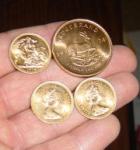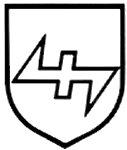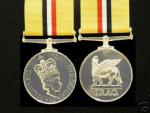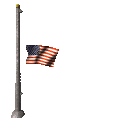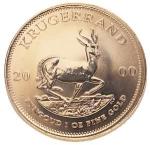-
Posts
3,492 -
Joined
-
Last visited
-
Days Won
25
Content Type
Profiles
Forums
Blogs
Gallery
Events
Store
Everything posted by bigjarofwasps
-

Op Telic Casualties & Fatalities
bigjarofwasps replied to bigjarofwasps's topic in Modern Campaigns and Conflicts
Gunner Stephen Wright and Gunner Samuela Vanua died in a roadside explosion near Ad Dayr, north of Basra, on 4 September. Both were members of 12 Regiment Royal Artillery. Gunner Wright, 20, from Leyland in Lancashire, had joined the Army aged 16 after four years as a cadet. His commanding officer said Gunner Wright had "very much come of age in Iraq". Lt Col Jon Campbell said: "I was struck by Gunner Wright's confidence, growing maturity and belief in himself." Col Campbell said he got to know Gunner Vanua, a 27-year-old Fijian, in July when they had been on patrol together. "I was impressed by his excellent attitude, infectious cheerfulness, conduct and confidence," he said. http://news.bbc.co.uk/1/hi/uk/5319350.stm http://news.bbc.co.uk/1/hi/uk/5317032.stm -
Iraq Reserves of foreign exchange and gold http://www.indexmundi.com/iraq/reserves_of...e_and_gold.html http://en.wikipedia.org/wiki/Iraqi_gold
-

Roll of Honour Afganistan
bigjarofwasps replied to bigjarofwasps's topic in Modern Campaigns and Conflicts
http://uk.news.yahoo.com/02092006/325/four...lane-crash.html -

Op Telic Casualties & Fatalities
bigjarofwasps replied to bigjarofwasps's topic in Modern Campaigns and Conflicts
The total number of UK troops killed in operations in Iraq has risen to 117 after the death of two soldiers in a roadside attack near Basra on 4 September 2006. SEPTEMBER 2006 Two UK soldiers died after a patrol was targeted by a roadside bomb and small arms fire about nine miles (15km) north of Basra, close to the town of Ad Dayr on 4 September. -

Kruggerands, the new sovereign
bigjarofwasps replied to bigjarofwasps's topic in Coins & Commemorative Medallions
And this, but now I`m totally confused, as an ounce Krugerrand is worth 3 times as much as a Sovereign... "A user unit asked to change what they were carrying for the following reasons: a) The area they were operating in/over included societies that were unlikely to be persuaded by any form of paper money - they worked in a barter based society where gold had a value but paper/banking didn't. b) The Sov as an individual coin represented too high a value. There being little chance of getting change, any transaction could lead to a ridiculous overpayment and consequent loss of credibility. Any single coin also represented a large proportion of the total 'stash'. c) The Krug, being of smaller denomination made barter a more flexible operation. More coins could be added incrementaly to a deal, or more deals could be made etc. There was no consideration given to the total value of gold carried ie Krugs weren't a 'cheaper' option the plan was to carry approx the same sterling value. There was no intention to 'distance' the carrier from any particular state/government. The fact that the Sov carried a picture of the Queen's head versus the Krug's antelope was considered, but was not a significant consideration. The main issue was personal security and the flexibility to barter in a culture where, whatever the situation, barter was expected." -
-

Kruggerands, the new sovereign
bigjarofwasps replied to bigjarofwasps's topic in Coins & Commemorative Medallions
I have no hard evidence, but have been told the following............ "I was a GLO on a GR4 Sqn. In the gulf I had to sign for all of the gold, money & blood chits. All were wrapped into bundles that consisted of: 1 x blood chit (printed on waterproof paper IIRC) 10 x Large Krugerrands (from the picture on the previous page) $250 or $500 (can't remember, sorry) in $20 bills With reference to the last, if crews had to divert and didn't take some operating cash with them, then God bless 'em, they'd just pile inot the cash and try to justify it on their return. Some of the packs had mangy $1's, $5's and the like! On our Op, all received the same pack-up which was signed out just prior to flight with their PPW. The Ops Sgt and I spent a whole day at either end of the tour sorting it all out and checking it for audit purposes. We calculted that the safe where it was all kept had in excess of ?40,000 in gold alone!!!" "If I recall it was the biggest one (sorry, can't remember what it was called!) of those in the picture and the guys carried 5 of them. I think they amounted to about ?2500 and were wrapped in the E&E maps and then plastic to stop the maps getting covered in sweat (not that it made a difference to the map, I guess it was to stop them stinking out the office!). They would carry them along with their goolie chit in the top pocket of their flying suit. By the time they walked to the jets with everything else they had to carry they were a good couple of stones heavier!" "Aircrew currently carry Krugerands. Had to sign for the detachments gold - some ?40,000 worth!" -
-

Roll of Honour Afganistan
bigjarofwasps replied to bigjarofwasps's topic in Modern Campaigns and Conflicts
http://news.bbc.co.uk/1/hi/world/4777977.stm -

Roll of Honour Afganistan
bigjarofwasps replied to bigjarofwasps's topic in Modern Campaigns and Conflicts
http://news.bbc.co.uk/1/hi/uk/5290198.stm -
-
With all thats going on for the British Army in places like Iraq & Afganistan, I cam across this article its not so much the content of the article, but the fact that British soldiers are still deployed on operations there that the world seems to have forgotten about!!! From Bosnia to Wales: a cycle challenge with a difference Bighearted soldiers from 2nd Battalion the Yorkshire Regiment are preparing to undertake a cycle ride with a difference.
-

Roll of Honour Afganistan
bigjarofwasps replied to bigjarofwasps's topic in Modern Campaigns and Conflicts
http://news.bbc.co.uk/1/hi/england/5269272.stm -

Roll of Honour Afganistan
bigjarofwasps replied to bigjarofwasps's topic in Modern Campaigns and Conflicts
http://news.scotsman.com/index.cfm?id=1147132006 -
On the contrary Kev, thats really interesting thanks for posting it on the thread Thanks for sharing it with us, can anyone tell us any more about it?
-

Op Telic Casualties & Fatalities
bigjarofwasps replied to bigjarofwasps's topic in Modern Campaigns and Conflicts
Romanian Military Police Corporal on duty was killed with 3 Italian comrades by a bomb in a car driven into his convoy, I attach details from a Romanian Online Newspaper: "One Romanian, three Italian soldiers killed in Iraq". The soldiers were killed during a patrol mission near An Nassyria yesterday morning. The Romanian and Italian authorities, the Pope expressed deep regrets and condemned the terrorist attack. published in issue 3668 page 1 at 2006-04-28. Corporal Bogdan Hancu (28, photo) from Iasi, from a family of professional soldiers, was in Iraq with the Military Police Detachment deployed to Camp Mittica. The armoured vehicle in which the soldiers were patrolling was attacked by Iraqi rebels around 8:00 AM. A trap vehicle was driven straight into the patrol car killing the Romanian and three Italians. The joint Romanian-Italian convoy formed of four army vehicles was just starting a patrol mission that was eventually fatal. Onboard the vehicles there were one Italian officer, 15 Carabinieri and one Romanian – Bogdan Hancu. The military convoy was driving to the Provincial Joint Operation Centre – the integrated operative venue of the security forces serving the province – where the victims of the attack were supposed to carry out their regular service of ground control in coordination with the local security forces. The attack is being investigated by an Italian-Romanian commission. Romanian soldier repatriated last night. The body of the Romanian soldier was expected to be flown to Bucharest last evening. Bogdan Hancu will be entombed with military honours most likely on Saturday. The Mayor of Iasi has announced that the municipality would assist the family with money and with a grave. Condolences President Traian Basescu voiced his deep regret for the loss suffered by the family of Corporal Bogdan Hancu. “Through the courage to be a member of the Romanian troops that maintain peace in the hot areas of the world, Corporal Bogdan Hancu ranges among the Romanian heroes who put their lives at risk day after day, taking action there where terrorism represents a daily reality,” said the President, quoted by a press release of the Presidential Administration. Premier Calin Popescu Tariceanu and the Government in their turned deplored the terrorist attack. “Premier Calin Popescu Tariceanu and the Executive express their deepest condolences and their solidarity with the family of the dead Romanian military,” reads a news release issued by the Government. The Minister of Foreign Affairs extended “his sincerest condolences and solidarity to the family of the Romanian soldier”. The Social Democratic Party (PSD) also expressed regret over the loss of the Romanian soldier and conveyed condolences to his family. American and British Ambassadors Nicholas F. Taubman and Quinton Quayle also expressed their regret for the victims of the attack, and conveyed condolences to the Romanian soldier’s family. The American diplomat expresses in a news release his gratefulness that “America has such a brave and trustworthy ally as Romania in the war on terror.” In turn, Quinton Quayle stated that he was impressed with the courage and determination proven by the Romanian troops stationed in Iraq. The President of Italy, Carlo Azeglio Ciampi and current PM Silvio Berlusconi expressed their consternation and immense grief. Ciampi called upon the competent authorities to keep him informed of any developments and on the details of the attack. Recently elected Head of the Italian Government Romano Prodi in his turn pointed out that “the tragedy is affecting the entire Italy.” Bogdan Hancu, promoted post-mortem The Ministry of National Defence leadership expresses its regret for the death of Caporal Bogdan Hancu and stands by the mourning family, reads a communiqu?. Through the order of the National Defence Minister, the caporal was promoted to the rank of Junior Lieutenant post-mortem. The Ministry will take all the necessary measures to support Bogdan Hancu’s family during such hard moments. The Ministry of National Defence also expresses its regret for the human losses suffered by the Italian partners. Corporal Bogdan Hancu is the second Romanian soldier to have died in Iraq, but the first one to die on a mission. On March 25, 2006, soldier Lili Dobre (engaged under a contract) from Battalion 280 Focsani, shot himself. Romania has deployed to the An Nassyria region a battalion of infantry - Battalion 280 Focsani – and a military police detachment. They are all accommodated at the Camp Mittica base under Italian command. Italy will pull out from Iraq until the end of this year. The decision has been made by Italian Premier Silvio Berlusconi under the pressure of the public. Romania has not made any plans or decision about such an eventuality so far, President Basescu having repeatedly stated that the Romanian troops would stay in Iraq as long as it is deemed necessary. Confusion The family of the soldier was announced by the representatives of the Defence Ministry soon after the attack. According to the Press Bureau of the Ministry, the person who was announced was the Corporal’s father, Marcel Hancu. Subsequently, the media announced this name. But, a news report signed Mediafax reads the opposite, namely that the family of the soldier had learned about his death from the press. ”We realised what happened when we saw the media at our door. It was around 11 O’clock, and nobody from the unit had called to tell us. When my wife learnt the news she fainted. We knew the risks of the profession of our soldier, but we had never thought that such a thing could happen to Bogdan,” has allegedly said the father of the killed soldier to Mediafax correspondent. The Ministry denied this information, stressing that probably the mother of the Corporal had not been announced about the death of her son before learning it from the media, but the father had been announced before the information was transmitted to the press. Corporal Bogdan Hancu comes from a family with military tradition. Both parents, Marcel and Carmen Hancu, had been officers, switched in reserve with the rank of colonel, and Lt. Colonel. “We have not encouraged him to follow a military career. It was his decision. He had the rank of corporal and he wanted to be upgraded. A mission abroad would have facilitated his promotion. He left to Iraq in January, and had to return in July,” said Carmen Hancu. Bogdan Hancu had married Ionela, an accountant, last November, and they planned to have a baby after his return from the mission. The two were living together with Bogdan’s grandmother, in a flat obtained subject to a real estate loan. Hancu family wants to bury Bogdan in the cemetery “Sfintii Petru si Pavel” from Iasi, in the lot reserved for the soldiers fallen in the line of duty. Pope condemns Iraq attack VATICAN CITY - Pope Benedict XVI on Thursday expressed “profound grief” over the bomb attack in Iraq which killed three Italians and one Romanian soldier. In a letter of condolence to Italian Foreign Minister Gianfranco Fini, the pope paid tribute to the Italian contingent’s “generous and unselfish contribution” to peace and freedom in Iraq. The letter was signed by the Vatican “foreign minister” Monsignor Giovanni Lajolo who said earlier, in an interview with Vatican Radio, that that the Iraq attack and the recent bombings in Dabab, Egypt, were “acts of cruel barbarity”. by Rodica Pricop. -

FIRST ROMANIAN SOLDIER KILLED IN IRAQ 27 APRIL
bigjarofwasps replied to Kev in Deva's topic in Modern Campaigns and Conflicts
It is with deep regret and shame, that I must admit I have only just noticed this thread. If no one objects, I`d like to add him to the Op Telic roll of honour list of names. -

Medals for service in Iraq
bigjarofwasps replied to mariner's topic in Modern Campaigns and Conflicts
I think you`ll be OK buying on Ebay, a lot of the medals for sale, are coming from the orignal soldiers themselves so you might get some photos or paperwork if not a bit of service history with them, if you ask. If I know a British soldier, extra beer money talks!!!!!!! -

Medals for service in Iraq
bigjarofwasps replied to mariner's topic in Modern Campaigns and Conflicts
I think 1 is refered to as the liberation? As for 2-4 being the occupation I don`t think thats the correct term either, but as for what it should be refered to, I`m open to suggestions? As what about 5+? -

Medals for service in Iraq
bigjarofwasps replied to mariner's topic in Modern Campaigns and Conflicts
-

Roll of Honour Afganistan
bigjarofwasps replied to bigjarofwasps's topic in Modern Campaigns and Conflicts
Herr General, thank you for this post. I think I speak on behalf of all nations when I say, any soldier killed in the line of duty whilst on an operation tour, merits rememberance with the rest of the fallen, as if they hadn`t been deployed on active service in an active roll they wouldn`t have been there to pay the ultimate price in the first place.......We will remeber them all!!!!!!!!!! Are there any pictures of them? -

Medals for service in Iraq
bigjarofwasps replied to mariner's topic in Modern Campaigns and Conflicts
-

Roll of Honour Afganistan
bigjarofwasps replied to bigjarofwasps's topic in Modern Campaigns and Conflicts
Afghan clashes 'leave five dead' At least four foreign soldiers and an Afghan soldier have been killed in two separate incidents in Afghanistan. Three soldiers with US-led forces died in clashes in the volatile eastern region of Kunar, a spokesman said. A Nato soldier and an Afghan soldier were killed in a gun battle with Taleban fighters in southern Uruzgan province, an official said. Militants have recently stepped up their insurgency against government and foreign forces in the south and east. Insurgents attacked a joint Nato-Afghan army convoy in southern Afghanistan, according to a force spokesman. Three other Nato soldiers were wounded in the attack, officials said. The identities of the victims had not yet been released. It was also not clear if there were casualties among the Taleban combatants. The BBC Roland Buerk, in Kabul, says Afghanistan is going through its bloodiest period of violence since the fall of the Taleban in 2001 and Kunar province has seen much of the fighting. In recent weeks coalition troops have been pushing northwards into the remote mountains but the Taleban and their al-Qaeda allies have been hitting back. On Thursday a coalition soldier was killed and another wounded in an ambush. The US led coalition has been hampered by the rugged terrain and the ability of the insurgents to slip across Kunar's border with Pakistan into the tribal areas of the northwest frontier province to regroup, our correspondent says. -
South Africa's gold industry has been the principal focus of black economic empowerment, resulting in a changing ownership structure. Leading the empowerment movement in recent years has been Harmony Gold Mining Company which has merged with ARMgold which is owned by African Rainbow Minerals. South Africa is the world’s largest gold producer, marking the lowest production level since 1956. In 2003 gold production fell by an estimated 6.5% to 373,074 kg, however gold still accounted for an estimated 37% of dollar export revenue within the country. 95% of South Africa’s gold mines are underground operations, reaching depths of over 3.8 km. Coupled with declining grades, increased depth of mining and a slide in the gold price, costs have begun to rise and as a result production has been steadily falling. However, in order to cut costs, mines have undergone major business re structuring and have reduced costs dramatically. Unfortunately, this process involved several thousand workers being retrenched. The future of the gold industry in South Africa depends on increased productivity. South Africa as the world's largest producer of gold, is more exposed than any other country to slumps in price because its deep level mines are the highest cost producers in the world. South Africa’s gold mines have the highest production costs in the industry. Gold is the largest mineral foreign income earner in South Africa, contributing 27.4% in mineral revenues. The gold industry is also responsible for 56% of South Africa’s mine labour force. South Africa’s has enormous gold ore reserves, estimated at 40 000t, representing 40% of global reserves. South Africa’s main gold producing area is concentrated on the Archaean Witwatersrand Basin. The Witwatersrand basin, which has been mined for more than 100 years and has produced more than 41 000 t of gold, remains the greatest unmined source of gold in the world. Major new projects, new technology, new approaches to the organisation of work, better labour relations and some commercial innovations are starting to reshape this industry. Unlike most other gold deposits in the world, the Witwatersrand (“Wits”) is a gold placer deposit, with gold being hosted by conglomerates and grits. The Wits sedimentary basin is massive and stretches through an arc of approximately 400km across the Free State, North West and Gauteng Provinces. The gold bearing conglomerates or reefs are generally tabular with varying dips. Most of the Wits basin is covered by later stage sediments of the Ventersdorp and Karoo groups, with the Wits outcropping in Johannesburg, which started the Wits gold rush over a hundred years ago and resulted in formation of the city of Johannesburg. South Africa does have other smaller gold producers outside of the Wits, in the form of Archaean greenstone belts. The main gold producing greenstone belts are the Barberton Greenstone Belt and the Kraaipan greenstone belt. The Barberton greenstone belt is situated in the Mpumalanga province, just north of Swaziland. The Kraaipan belt is located west of Johannesburg, near Kuruman. Other smaller belts exist in the Northern Province, but have been worked sporadically. The South African gold mining industry in 2002 was driven by the rand's weakness against the dollar and the resulting increase in the rand price of gold, however, in 2003 the rand:dollar exchange rate had an adverse effecr on costs and revenues with many companies reporting decreases in profit. Metorex reported a headline loss of 12,18c per share for the haplf year to December 2003. ? #Major Projects The development of the South Deep Mine (owned jointly by Western Areas and Placer Dome). This mine is a southerly extension to the Western Area Gold Mine, and contains measured and indicated reserves of 78.9 million ounces of gold in 541 million tonnes grading 4.5 g/t gold. Currently a 2.4 km shaft is being sunk to intersect haulage’s developed from the Western Areas mine to the north. Avgold are currently developing the Target orebody (estimated total resource of 6.5 Moz), situated in the Free State Province. Similar to South Deep, the orebody is being accessed by haulages developed from Avgold’s Lorraine Gold Mine. AngloGold are investigating using deep level mining technology to develop the Ultra Deeps orebody, situated at 5km depth. The orebody is currently down dip from Harmony Gold's Elandsrand mine. ? #Structure Due to the numerous changes in control and mergers that have occurred in the South African Gold Industry, many of the traditional names have been rendered redundant. South Africa’s major gold producers (producing more than 1Moz annually) are AngloGold, Gold Fields, Harmony and Durban Roodepoort Deep (DRD). Numerous other gold mines exist, operated by Avgold, JCI Gold and African Rainbow Minerals. Due to the numerous changes in control and mergers that have occurred in the South African Gold Industry, many of the traditional names have been rendered redundant. Consolidation of South Africa's mining industry has become a key issue in order to maintain the industry as a leading gold producer globally. Most of South Africa's goldfields have been split up according to the current mineral rights holders, although the orebody being exploited is essentially the same. In order to extract the orebody effectively, South African producers will have to devise methods in which the "farm fences" dividing their properties can be eliminated, leading to a more economically method of mining and extraction to the benefit of all parties concerned. A similar scenario exists in Nevada, where Rio Tinto and Barrick have a similar arrangement. Currently, South Africa's gold production is dominated by Anglo Gold, Gold Fields and Harmony (and to a lesser extent DRD). Anglo Gold has already began the consolidation process through the sale of several of its older mines in the North West and Free State Provinces to Harmony Gold. Further consolidation in the Free State Goldfields continued in 2001, with AngloGold selling off its Free State assets to a Joint Venture (called Freegold) between Harmony and African Rainbow Minerals (ARM). Talks are also underway between Gold Fields and Harmony over some of Gold Fields's assets in the Free State.






